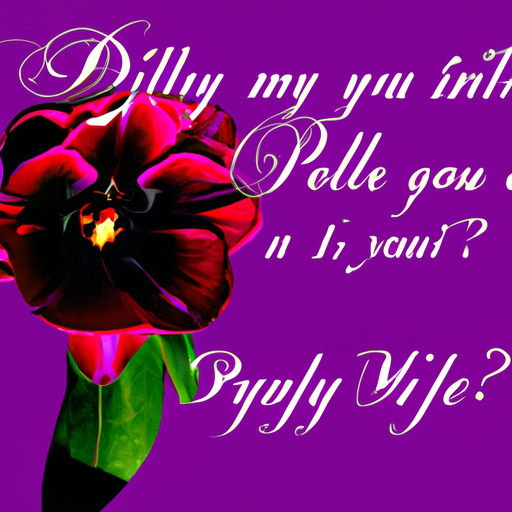So, you want to know the distinction between friendly banter and flirting in text conversations? Well, let’s delve into it! When it comes to friendly banter, it’s all about having a lighthearted conversation with someone. It’s about exchanging playful remarks and teasing each other in a good-natured way. Think of it as a fun and casual interaction, where the emphasis is on creating a friendly and enjoyable atmosphere.
On the other hand, flirting in text conversations transcends the boundaries of mere friendly banter. Flirting often involves a subtle or direct expression of romantic or sexual interest. It goes beyond playful teasing and may include compliments, suggestive remarks, or flirty emojis. Flirting aims to create a romantic or sexual undertone that indicates a potential interest in pursuing a deeper connection.
So, there you have it! The key difference lies in the intention and the underlying tone of the conversation. Friendly banter is all about fun and enjoyment, while flirting adds a hint of romantic or sexual interest. Just remember, it’s important to respect the boundaries and comfort levels of the person you’re talking to. Happy texting!

1. Use of emojis and emoticons
1.1 Emojis as friendly banter
In text conversations, emojis play a significant role in conveying emotions and adding a touch of playfulness. When engaged in friendly banter, the use of emojis is common and encouraged. Emojis can help express excitement, laughter, or simply add a lighthearted tone to the conversation. For example, using a laughing emoji after sharing a funny anecdote can emphasize that you’re engaging in friendly banter and enjoying the conversation.
1.2 Emojis as flirting
When flirting, the use of emojis can take on a different purpose. While still incorporating playful elements, flirting with emojis often includes more romantic or suggestive symbols. For instance, sending heart emojis, wink faces, or blowing kiss emojis can convey an intimate or flirtatious intention. However, it’s important to note that people may interpret emojis differently, so it’s crucial to consider the context and the relationship you have with the person you’re texting.
2. Tone of the conversation
2.1 Lighthearted and casual tone as friendly banter
Friendly banter usually involves a lighthearted and casual tone. The conversation feels relaxed, and there is an overall sense of ease and comfort. You can engage in playful banter, share jokes, and tease each other in a friendly manner. The goal is to maintain a fun and enjoyable conversation without any deeper romantic implications.
2.2 Suggestive and playful tone as flirting
Flirting, on the other hand, involves a more suggestive and playful tone. The conversation may contain subtle hints, romantic innuendos, or double entendres. This tone creates an atmosphere of attraction and desire. The intention behind flirting is to create a sense of romantic tension and to let the other person know that you are interested in them on a deeper level.

3. Frequency and intensity of compliments
3.1 Genuine compliments as friendly banter
Friendly banter often involves genuine compliments, but they are typically less frequent and less intense compared to flirting. Compliments in friendly banter focus on the person’s positive qualities or achievements without delving into romantic or physical aspects. These compliments are meant to boost the person’s confidence and show appreciation for their character.
3.2 Excessive and flirty compliments
Flirting, on the other hand, often includes excessive and more flirty compliments. They are given more frequently and can touch on physical attractiveness or flirtatious attributes. Flirty compliments may include comments about someone’s appearance, charm, or appeal. These compliments are designed to create a sense of attraction and make the other person feel desired.
4. Playful teasing and sarcasm
4.1 Light-hearted teasing as friendly banter
Light-hearted teasing is a common element of friendly banter. It involves playful jokes and humorous teasing that both parties find enjoyable. The teasing is lighthearted and doesn’t touch sensitive subjects or cause any discomfort. It’s essential to ensure that both individuals are comfortable with the teasing and that it’s taken in the spirit of fun and camaraderie.
4.2 Teasing coupled with sexual innuendos as flirting
When flirting, teasing can take a more intimate turn. It can involve sexual innuendos or jokes that imply a deeper attraction. The teasing in flirting often includes references to physical intimacy or romantic encounters. It’s crucial to gauge the other person’s comfort level and ensure that the teasing remains within the boundaries of consent and mutual interest.

5. Use of inside jokes
5.1 Casual references to shared experiences as friendly banter
Friendly banter often includes references to shared experiences or inside jokes between two people. These references create a sense of familiarity and reinforce the bond between friends. They serve as a reminder of the shared history and common interests, making the conversation more enjoyable and personal.
5.2 Flirtatious and intimate references as flirting
Flirting can involve references to shared experiences as well, but in a more flirtatious and intimate manner. These references can remind the other person of romantic or intimate moments shared between them. Flirting with inside jokes creates a sense of exclusivity and deepens the connection between the individuals involved.
6. Length and depth of conversation
6.1 Short and surface-level conversations as friendly banter
In friendly banter, conversations tend to be relatively short and surface-level. They involve casual topics, light-hearted banter, and quick exchanges. While enjoyable and engaging, the conversation typically doesn’t delve into deeper personal questions or thoughts. Friendly banter is meant to be easy-going and effortless.
6.2 Long and personal conversations as flirting
Conversely, flirting often leads to longer and more personal conversations. Flirting involves getting to know each other on a deeper level and discussing more meaningful subjects. The conversation may touch on personal goals, dreams, or even past relationships. Flirting allows for a deeper emotional connection to develop between the individuals involved.

7. Invitations and future plans
7.1 Group invitations and casual plans as friendly banter
In friendly banter, invitations and plans typically involve group activities or casual outings. It could be suggesting grabbing a coffee or going out with a group of friends. The focus is on enjoying each other’s company in a low-pressure setting. These plans are meant to strengthen the existing friendship rather than explore romantic possibilities.
7.2 Invitations for one-on-one activities and future dates as flirting
Flirting often involves more intimate and one-on-one invitations. The focus shifts from group activities to spending quality time together. It could involve inviting the person to a movie, a romantic dinner, or any other activity that fosters a deeper connection. These invitations indicate a desire for a romantic involvement or greater intimacy.
8. Use of pet names and compliments
8.1 Friendly use of pet names as friendly banter
In friendly banter, the use of pet names is often light-hearted and casual. It can include playful nicknames that showcase a fondness or affection for the other person. These pet names serve to create a sense of closeness and warmth, emphasizing the bond between friends.
8.2 Flirty and intimate use of pet names and compliments
Flirting involves a more flirty and intimate use of pet names and compliments. The pet names become more endearing and may have romantic connotations. Compliments given alongside these pet names can be more intense, emphasizing physical attractiveness, or using terms of endearment with a deeper romantic implication.

9. Response time and engagement
9.1 Prompt and enthusiastic responses as friendly banter
In friendly banter, prompt responses and enthusiastic engagement are signs of a positive and enjoyable conversation. Both parties actively participate and show genuine interest in keeping the conversation going. Responding in a timely manner and showing enthusiasm conveys that you value the person’s company and enjoy talking to them.
9.2 Delayed and selective responses as flirting
When flirting, responses might be delayed and more selective. This delay in response time, when not due to external factors, can create a sense of anticipation and intrigue. Selective responses may indicate that the person is carefully considering their words to ensure a more flirty or mysterious tone. Delayed responses can also be a strategy to maintain a certain level of distance or to create a sense of longing.
10. Level of personal disclosure
10.1 General and light-hearted sharing as friendly banter
Friendly banter typically involves general and light-hearted sharing. The focus is on discussing everyday experiences, hobbies, or interests. Personal disclosure remains at a comfortable and non-intimate level. The conversation is light and enjoyable without delving too deeply into personal matters.
10.2 Deep and intimate sharing as flirting
When flirting, conversations often involve deeper and more intimate sharing. This can include personal goals, vulnerable experiences, or even secrets. The level of personal disclosure deepens the emotional connection and shows a willingness to trust the other person. Flirting creates a safe space for individuals to share more personal aspects of their lives.
In conclusion, while friendly banter and flirting may share some similarities, there are notable differences in their use of emojis and emoticons, tone of conversation, frequency and intensity of compliments, playful teasing and sarcasm, use of inside jokes, length and depth of conversation, invitations and future plans, use of pet names and compliments, response time and engagement, and level of personal disclosure. Understanding these distinctions allows for better communication and helps navigate the line between friendly banter and flirting in text conversations. Remember to always be mindful of the other person’s boundaries and to communicate openly and honestly to maintain a healthy and respectful interaction. Happy texting!




